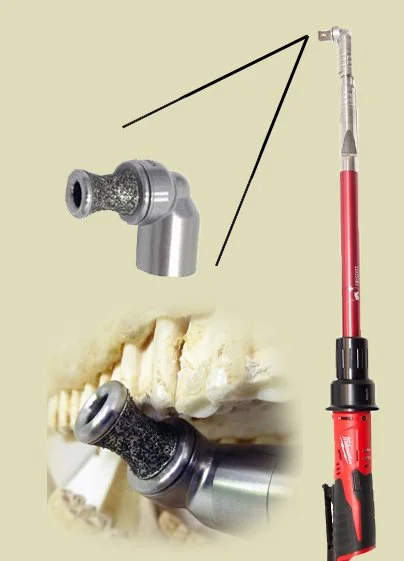Dental Care
FLEP Dental Care
A horse’s teeth grow throughout their life, and can become a source of weight loss, poor performance and behavioral issues if unmanaged. Finger Lakes Equine Practitioners utilizes Terafloat power dental tools to maintain and correct, if necessary, your horses dental arcade for optimal health.
Why a DVM
Click here to read the American Associations of Equine Practitioners (AAEP)’s article: Equine Dentistry: Why Equine Veterinarians are Uniquely Qualified
Dental Problem Warning Signs
Weight loss
Failure to gain weight
Difficulty eating
Quidding or dropping feed
Packing food into the cheeks
Halitosis (bad breath)
Colic
Nasal discharge
Poor performance
Difficulty with the bit
Abnormal head movement or carriage
Behavior changes
Dental Care Protocol for Horses
Why Dental Health is Important
As you can see in the illustration, while chewing the horses teeth grind the food when eating, with the upper cheek teeth working to the outside and the lower cheek teeth working to the inside. These teeth wear aginst each other causing a “sharpening” of one side - the inside of the lower cheek teeth and the outside of the upper cheek teeth. The horses teeth continue to grow throughout their lives to replace the worn portion.
“Floating” teeth is the process whereby we remove the sharp points of the tooth and preserve the surface of the tooth contacting the feed. This allows the horse to efficiently chew, yet avoids the extremely sharp, potentially irritating or injurious sharpened surface.
“Caps” or baby teeth
Just like in people, horses replace their baby teeth or “caps” with permanent teeth. Four of these caps, one for each upper and lower, right and left premolar are shed at the ages of 2 1/2, 3 1/2 and 4 1/2 years of age.
When caps are retained they can interfere with the incoming permanent teeth and cause pain deformity and/or conformational problems in the horses mouth.
The first dental exam and float is recommended at 18 to 20 months. These should occur twice yearly through the process of the mouth maturing around five or six years old. At these appointments we can address problems and create plans to correct abnormalities.
From ages five to twenty the oral exam and float should be annual. We will round the sharp points and maintain the three point balanced bite pattern to prevent bit issues. This exam checks for fractured teeth, gum disease, oral injuries and foreign bodies.
After the age of twenty the teeth slow their growth. The annual exam is still needed to identify disease and pathology, but the floating process is minimal and less material is removed from the tooth surface. Older horses have many of the same problems seen in aging people; tooth loss, sensitivity and gum disease. Without these checkups, horses often go for extended periods of time with pain and discomfort.
Rostral Hook
Rostral Hooks/Caudal Ramps
Rostral hooks are an overgrowth of the first premolar. It is the first upper tooth visible.
In most cases, if a rostral hook is present, a caudal ramp is present. This is due to a similar wear pattern we see between top and bottom teeth, only this is front to back. Horses that develop an overbite, shift the lower jaw backward. The front top teeth loose their opposing surface and are allowed to grow unchecked. The same thing happens to the lower back teeth.
We can often correct this condition with regular reduction of these teeth and minor husbandry changes. The caudal ramp causes the most problem because of it’s contact with the soft tissue structures of the upper jaw and subsequent TMJ. We see this problem most frequently when manual hand tools are used by laymen. It is simply not accessible without a tool designed to work on individual teeth, without proper lighting or without adequate sedation.
Horses eating from raised tubs and hay feeders shift the lower jaw backward while eating. This shift causes the abnormal grinding pattern. Horses fed on the ground hold their jaw in a more natural, balanced position and rarely have either hooks or ramps.







